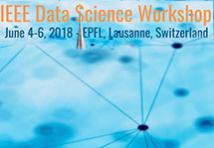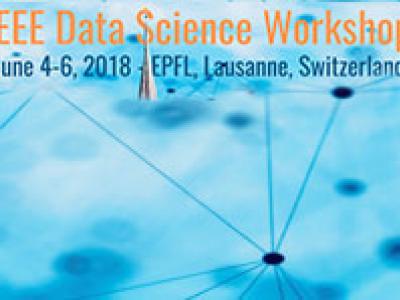
The 2018 IEEE Data Science Workshop is a new workshop that aims to bring together researchers in academia and industry to share the most recent and exciting advances in data science theory and applications. In particular, the event will gather researchers and practitioners in various academic disciplines of data science, including signal processing, statistics, machine learning, data mining and computer science, along with experts in academic and industrial domains, such as personalized health and medicine, earth and environmental science, applied physics, finance and economics, intelligent manufacturing.

- Read more about COMPUTATIONAL STRATEGIES FOR STATISTICAL INFERENCE BASED ON EMPIRICAL OPTIMAL TRANSPORT
- Log in to post comments
In this talk we discuss some recent limit laws for empirical optimal transport distances from a simulation perspective. On discrete spaces, this requires to solve another optimal transport problem in each simulation step, which reveals simulations of such limit laws computational demanding. We discuss an approximation strategy to overcome this burden. In particular, we examine empirically an upper bound for such limiting distributions on discrete spaces based on a spanning tree approximation which can be computed explicitly.
- Categories:
 27 Views
27 Views
- Read more about Profit Maximizing Logistic Regression Modeling for Credit Scoring
- Log in to post comments
Multiple classification techniques have been employed for different business applications. In the particular case of credit scoring, a classifier which maximizes the total profit is preferable. The recently proposed expected maximum profit (EMP) measure for credit scoring allows to select the most profitable classifier. Taking the idea of the EMP one step further, it is desirable to integrate the measure into model construction, and thus obtain a profit maximizing model.
- Categories:
 54 Views
54 Views
- Read more about Learning Flexible Representations of Stochastic Processes on Graphs
- Log in to post comments
Graph convolutional networks adapt the architecture of convolutional neural networks to learn rich representations of data supported on arbitrary graphs by replacing the convolution operations of convolutional neural networks with graph-dependent linear operations. However, these graph-dependent linear operations are developed for scalar functions supported on undirected graphs. We propose both a generalization of the underlying graph and a class of linear operations for stochastic (time-varying) processes on directed (or undirected) graphs to be used in graph convolutional networks.
- Categories:
 3 Views
3 Views
- Read more about SUBSAMPLING LEAST SQUARES AND ELEMENTAL ESTIMATION
- Log in to post comments
poster2018.pdf
- Categories:
 8 Views
8 Views
- Read more about Uncertainty Quantification in Sunspot Counts
- Log in to post comments
- Categories:
 2 Views
2 Views
- Read more about Semi-Blind Inference of Topologies and Dynamical Processes over Graphs
- Log in to post comments
Network science provides valuable insights across
numerous disciplines including sociology, biology, neuroscience
and engineering. A task of major practical importance in these
application domains is inferring the network structure from
noisy observations at a subset of nodes. Available methods for
topology inference typically assume that the process over the
network is observed at all nodes. However, application-specific
constraints may prevent acquiring network-wide observations.
- Categories:
 8 Views
8 Views
- Read more about False Discovery Rate Control with Concave Penalties using Stability Selection
- Log in to post comments
False discovery rate (FDR) control is highly desirable in several high-dimensional estimation problems. While solving such problems, it is observed that traditional approaches such as the Lasso select a high number of false positives, which increase with higher noise and correlation levels in the dataset. Stability selection is a procedure which uses randomization with the Lasso to reduce the number of false positives.
- Categories:
 11 Views
11 Views
- Read more about Non-negative Super-resolution is Stable
- Log in to post comments
We consider the problem of localizing point sources on an interval from possibly noisy measurements. In the absence of noise, we show that measurements from Chebyshev sys- tems are an injective map for non-negative sparse measures, and therefore non-negativity is sufficient to ensure unique- ness for sparse measures. Moreover, we characterize non- negative solutions from inexact measurements and show that any non-negative solution consistent with the measurements is proportionally close to the solution of the system with ex- act measurements.
poster.pdf
- Categories:
 11 Views
11 Views
We consider the problem of predicting power outages in an electrical power grid due to hazards produced by convective storms. These storms produce extreme weather phenomena such as intense wind, tornadoes and lightning over a small area. In this paper, we discuss the application of state-of-the-art machine learning techniques, such as random forest classifiers and deep neural networks, to predict the amount of damage caused by storms.
- Categories:
 15 Views
15 Views